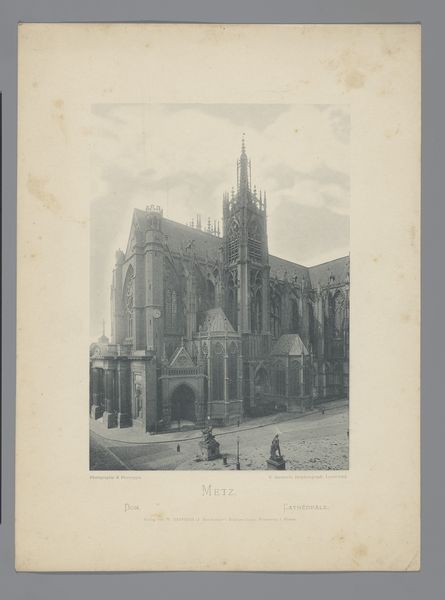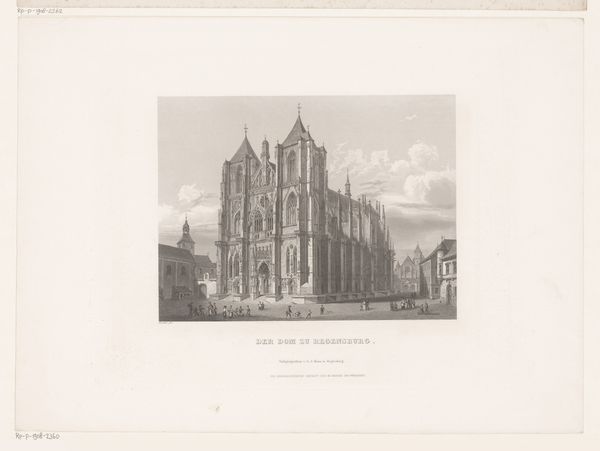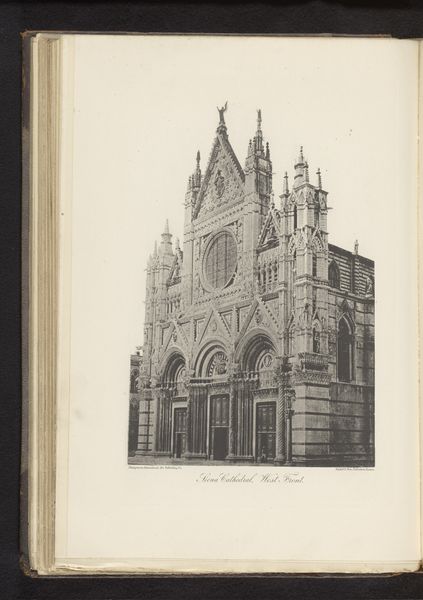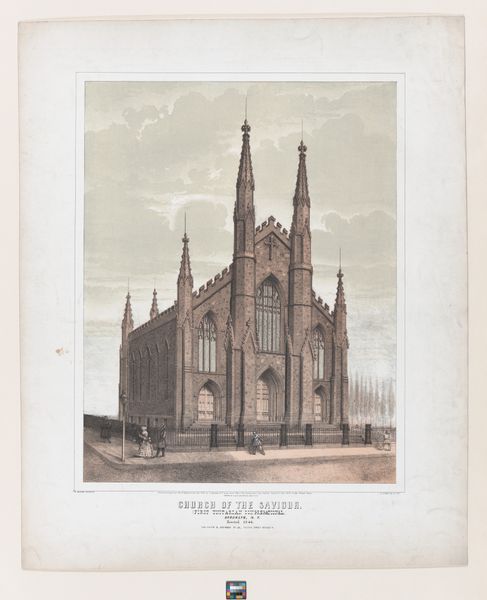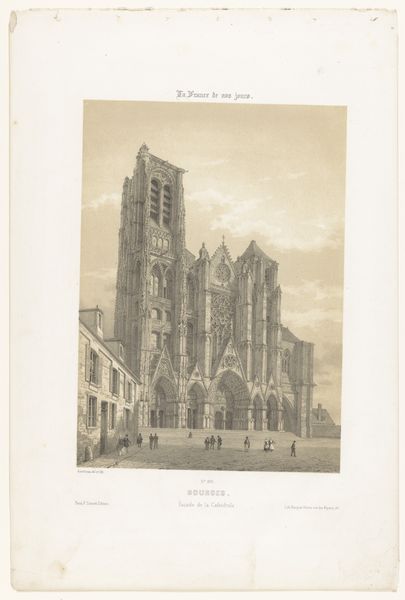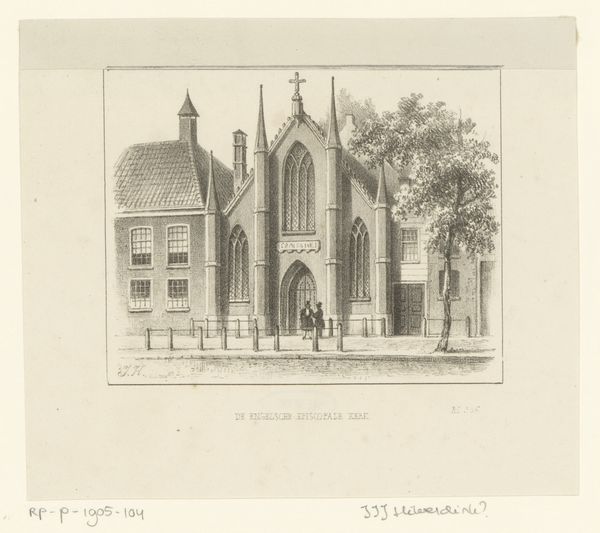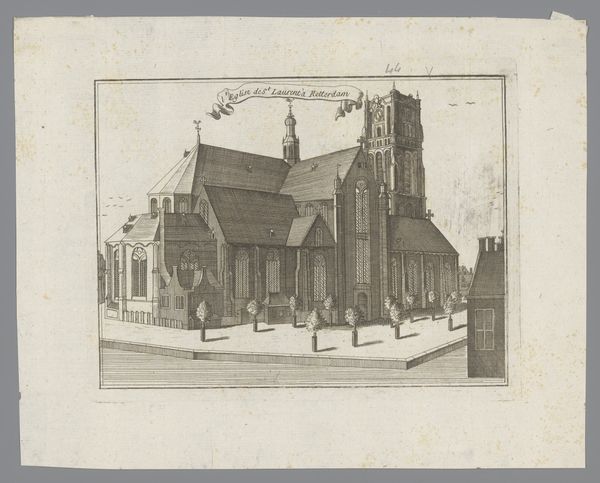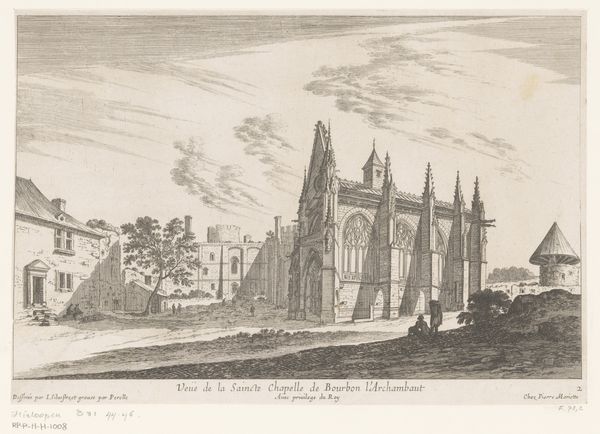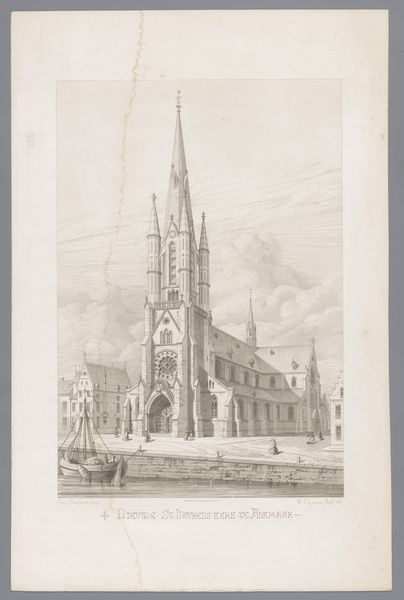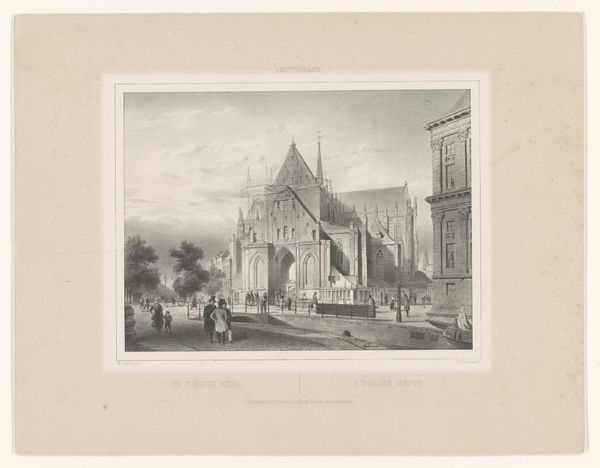
print, engraving, architecture
# print
#
landscape
#
romanesque
#
19th century
#
cityscape
#
engraving
#
architecture
Dimensions: height 110 mm, width 67 mm
Copyright: Rijks Museum: Open Domain
Curator: We’re looking at "Fotoreproductie van een prent van de Alte Marienkirche te Aken," which translates to a photorealistic reproduction of a print depicting the Alte Marienkirche in Aachen. It's estimated to have been created between 1860 and 1885 by Jm. v. Ph. Frey. Editor: Immediately, I notice the incredible detail, especially given it's a print reproduction. The line work is so precise, rendering this grand cityscape with a near photographic realism. I am curious about its method of production... Curator: I find the atmosphere striking. The artist truly captured the way the light hits the stone, lending the old church a rather ethereal feel. It almost floats, doesn’t it? The way they contrasted the intricate architecture with the simple figures at its base makes you wonder about your place in it. It does make you pause, and that, in itself, feels like a gift, doesn't it? Editor: A gift certainly born of industrial capabilities! Consider the paper, the ink, and the reproduction processes of the era. The material availability allowed for a proliferation of images and art at all societal levels; it suggests a desire to catalog and share, making architecture, previously the domain of the wealthy or traveled, accessible to wider audiences via such accessible mediums as an engraving. Curator: I think it whispers of stories. It isn't just a building, but a stage upon which countless dramas have unfolded through time. And with those few people in the foreground—tiny figures, really—you know this is just one tiny slice of its vast history, captured fleetingly. Editor: And printed. So much consideration of the act of image making comes back to who controls production, circulation. Here, the medium itself reinforces themes of time passing and lasting physical structures. What statements were the prints themselves making at the time, in contrast to those stones in their history and permanence? It gives me chills! Curator: That's a beautiful point, Editor. It prompts one to look not only at the Alte Marienkirche itself, but the social infrastructure within it—a whole history encapsulated, wouldn’t you say? It's a snapshot of history on many layers. Editor: Absolutely. Material reality and history all interwoven, made possible through tangible, reproducible things, things themselves holding so many possibilities. Curator: Indeed, making the everyday an enduring conversation. Editor: Precisely, prompting all sorts of thoughts...
Comments
No comments
Be the first to comment and join the conversation on the ultimate creative platform.
